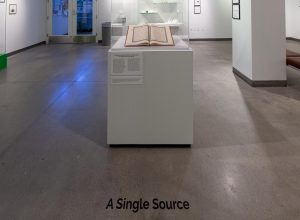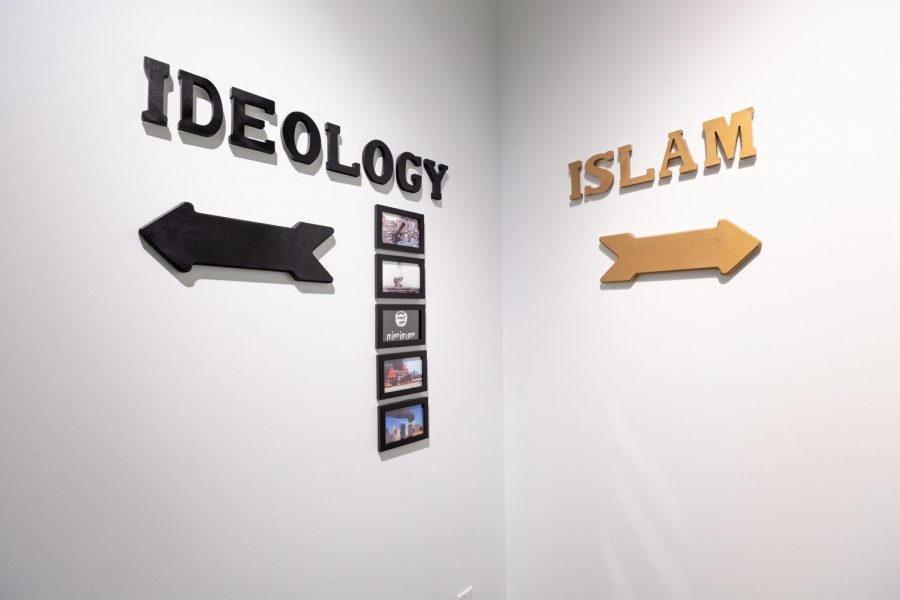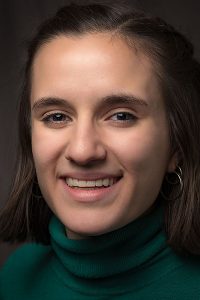Ummah Addresses Muslim Truths and Stereotypes
Growing up in this day and age, many of us have encountered the stereotypes of Islam. We may not think about it frequently, but back in the recesses of our minds, we’ve all registered generalizations about the Muslim people as fact. Through terrorist attacks, social breakthroughs and more, we have subconsciously established perfect little boxes containing everything bad about Muslim people.
Education is available for those who are willing to ask questions. We have been given so many valid reasons to fear, but it’s important to challenge those fears. A Salt Lake group of young Muslim women, headed by University of Utah Alumnae Satin Tashnizi and Nora Abu-Dan, has worked to create a bridge to cross the gap among Muslim and non-Muslim cultures. The Emerald Project was created in consequence. Abu-Dan said the project name “emerald” came from the color for Islam, representing the preciousness of their faith and its feminine founders.
Recently, the Emerald Project, their student ambassadors and the Salt Lake Muslim communities have joined forces with a cross-departmental team of Utah Museum of Fine Arts (UMFA) staff to present an informative exhibit entitled “Ummah.” Its goal — to represent the truth of the Muslim faith. The main brochure shares, “’Ummah’ is the Arabic word for community, referring to a collective of Islamic people transcending the boundaries of nations.” True to its creators and collaborative process, this exhibit has used the community to bring itself forth. As part of the Art. Community. Museum. Education. (ACME) program at UMFA, Emily Izzo, ACME Coordinator and Visitor Experience Coordinator said — “This project really is a way to create the relationship between Ummah and the UMFA.”
The Want for Dialogue
Upon entrance into the ACME Lab where “Ummah” is being held, the door is surrounded by peaceful welcomes and the feeling of love and peace. Once the door is opened, the first thing your eyes gaze at is the towering green wall covered in questions. Many would worry about the appropriateness of these questions. Some are as follows: Are media portrayals of Islam accurate? Is Islam kind to Christianity? Is there a difference between culture and religion? These questions lead to insightful conversations, which is what the Emerald Project wants.
Abu-Dan said, “we have had hard questions… as long as they are brought up in a respectful way. We believe in the power of dialogue,” and questions help begin and support dialogue. “Hopefully, throughout the exhibition, these questions can be answered.”
Ideology vs Islam
As you continue with your tour through “Ummah,” a living room set appears with the title, “Close to Home.” The story of 9/11 is pasted on the wall, in conjunction with pictures of the devastation on a slide show and a TED Talk Tashnizi gave regarding her faith. This portion of the room focuses on common stereotypes of Islam. Izzo said the hope is to “dispel the stereotype that Muslims are terrorists.” According to the Emerald Project, they really want to hone in on this idea that people who are committing terrorist acts in the name of Islam are not actually Muslim. None of what they do encourages the teachings of the Qur’an. Abu-Dan also pointed out how many Muslim Americans also lost loved ones in 9/11 and countless other terrorist attacks. This is a fact we often forget. To be terrified of those who share your faith is truly heartbreaking. She continued to explain how awful it was to be unwelcome at home, solely because all Muslims were immediately categorized as terrorists as a result of the tragedy.
“Ummah” continues on its journey of truth by looking at the section with a simple arrow and title, “Islam.” Across the wall stand the Five Pillars of Islam: Shahadah, Salat, Zakat, Sawm and Hajj. On each pillar, there are books, pictures, mementos and decorations to help represent each pillar of the Islamic faith. These pillars begin to bring in the ACME Lab idea of interactive art. You can read through the books, gaze through pictures, listen to pre-recorded tracks of Muslim people from the community discussing their conversion to Islam and reciting their prayers and more. The overwhelming voice of this section of the gallery is peace, prayer and community.
To conclude the five pillars, a simple white robe called ihram hangs in a glass display case. When attending Hajj, the fifth pillar of Islam, all Muslims wear this garment. Izzo said, “[This] is so that they all arrive there and are seen as equals,” combating the major misconception that inequality is a constant issue in Muslim culture.
The Qur’an and its Community

In the center of “Ummah” stands a display case with a gorgeous and personal copy of the Qur’an open for all to see. “This is really where the truth lies in the Muslim religion,” said Izzo. The Muslim religion finds its rules, lifestyle practices and more in the Qur’an. Upon the walls of the exhibit, you can read translations of the Qur’an verses specifically posted to try to share the truth behind the belief.
Directly behind the Qur’an stands a display entitled, “Community Wall.” While most of the exhibit is made up of local Muslim community members’ information and items, this is for Muslim community members to bring “objects that display what their religion means to them,” said Izzo. Within the glass walls, there is a miniature Qur’an, snow globes, bracelets, prayer beads and more. To an outsider, this display appears to be conjoining all different cultures under a similar religion. During an interview, Abu-Dan said of herself and the co-founders of the Emerald Project, “Our families would never have sat together.”
Not only is this project bridging the gap among Muslims and non-Muslims, but it is bridging the gaps within the Muslim community. The emphasis on the difference between culture and religion is shown here and many are divided by different cultural backgrounds. Izzo said, “I learned that in the local Muslim community, there are all these different mosques for the different culture and countries where people come from. There is a Bosnian Mosque, a Palestinian Mosque, a Pakistani Mosque… and according to the Emerald Project, the people in those mosques don’t often talk to each other. So, it’s trying to bring the entire community together.”
Wall for Women
“We really wanted to highlight women’s stories,” Izzo said. “I think that one of the biggest stereotypes in Islam is that women are underneath men and that they have to be subservient, when in fact, in the Qur’an, there are writings that talk about how women are at the head of the household and that they should be respected.” One of the final sections of “Ummah” is a wall containing all the headshots and stories of successful Muslim women from all over the world. These women broke stereotypes of their cultures, but not their religion. One of these women is the first female Sharia judge of Palestine, Dr. Kholoud Faqih. Not only is her story being put on display to break the “fake truth” of what we think we know, but the UMFA will actually be holding a screening of a movie on her life, entitled “The Judge,” at 7:00 p.m. on Nov. 6.
Interact with the Exhibit
In the final interactive portion of “Ummah,” there are two sections to open up the area for questions. An interactive magnet wall has been created, one side with common myths, and as a response verses from the Qur’an as actual truth. To end the exhibit, the Emerald Project, UMFA and the ACME Lab want to know what your remaining questions are about the entire project.
“Ummah” will be at the UMFA from Aug. 15 through Dec. 15. Admission to this and all the events being specially held in conjunction with the exhibit are free for U students. There is a general question-and-answer at the UMFA on Sep. 4 with the Emerald Project, providing a place for all questions. The screening of “The Judge” will be on Nov. 6 at 7:00 p.m. and following, the director of the movie will come out to talk about the film and answer questions. Finally on Saturday, Aug. 17, there will be an interactive calligraphy project at the UMFA in conjunction with “Ummah.”
a.raasch@dailyutahchronicle.com



